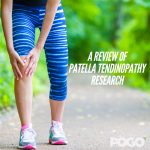PRP, so where do we stand now?
PRP injections have gained increasing popularity as a treatment option for numerous musculoskeletal injuries over the past few years. As the rise in media coverage, client popularity and its clinical use expanded, so too has the body of evidence surrounding PRP. It seemed as fast as it became popular, the evidence against its clinical effectiveness grew. When talking about PRP the phrase; “There’s no evidence for that,” is becoming increasingly common (1). However, with a large body of evidence for and against its use in a variety of musculoskeletal conditions, let’s step back and look at where we stand now.
A Quick Recap: WHAT IS PRP THERAPY?
PRP is an acronym for Platelet Rich Plasma therapy which is administered through a series of injections. PRP is also referred to as platelet-rich in growth factors, platelet-rich fibrin matrix, platelet-rich fibrin or platelet concentrate (2). PRP is prepared from a volume of autologous blood using extracorporeal blood processing techniques such as blood cell savers/separators, centrifuges and filtration methods. This will result in a platelet rich concentrate with variable concentrations of red and white cells depending on the specific preparation technique that is used.
The platelet rich plasma is kept and later injected into the affected site of injury or pathological area. Depending upon the tissue being used, concentration and protocol number of injections and spacing will differ. Platelets contain, synthesise and release large amounts of biologically active proteins that promote tissue regeneration. The most commonly studied platelet proteins include: platelet-derived growth factor (PDGF), transforming growth factor (TGF-β), platelet-derived epidermal growth factor
(PDEGF), vascular endothelial growth factor (VEGF), insulin-like growth factor 1 (IGF-1), fibroblastic growth factor (FGF), epidermal growth factor (EGF) and cytokines. The underlying premise of PRP use is to apply plasma and platelet-derived proteins to the desired location, which can then form a fibrin scaffold or temporary matrix for cell growth and differentiation to assist repair in the injured tissue. (2)
How is PRP Therapy Performed?
PRP therapy is performed through a number of sequential steps. The application and usefulness of the injection is determined through assessment of the pathology and reflection on current evidence. Once the decision is determined the procedure begins by drawing two lots of blood from the patient’s arm. There is currently no widespread standardisation of procedures and thus the concentrations of blood products (red and white blood cells, platelets and growth factors) will differ through the preparation process and dependent on the type of equipment utilised. The PRP sample is prepared through a spinning process – centrifuge or apheresis. A PRP injection is then performed under local anaesthetic to the site of injury and in some instances may be guided by ultrasound. The injection cycles again can differ according to the contents of the injection and protocol used. Some advocate a 3 injection cycle (up to 6), one week apart whilst others wait one month later (1). Further ‘top-up’ injections may also be recommended depending on the specialist’s clinical assessment, protocol and patient’s symptoms at 6, 12 or 24 months.
Acute muscle injuries are a common injury numerous athletes, costing time away from training and sport. Share on X
PRP in Muscle Injuries
Acute muscle injuries are a common injury numerous athletes, costing time away from training, sport and competition. It is often of interest for many clinicians and their clients to look for any edge to help earlier return to play. In addition to the other growing uses of PRP it has been utilised in management of acute muscle injuries (3). The rationale for its use would be for the aforementioned growth factors to help accelerate the natural healing processes. Several in vivo laboratory studies suggest beneficial effects of PRP in accelerating muscle recovery. Currently there is no robust evidence to demonstrate these effects in humans (3). In acute or even subacute muscle injuries the muscle is an actively healing, acutely inflammatory entity and there is potential to affect both the timing and the quality of repair adversely as well in a beneficial manner (6). A recent randomised controlled trial (RCT’s) published in the British Journal of Sports Medicine has found no benefit of a single PRP injection over intensive rehabilitation in athletes who have sustained acute, MRI positive hamstring injuries. Intensive physiotherapy led rehabilitation remains the primary means of ensuring an optimal return to sport following muscle injury (4). Some RCT’s have found the opposite (5), however the evidence is not strong enough for common use to shorten return to play times and or decrease re-injury risk. Acute muscle injuries are typically self-limited and will heal if given enough time and recovery fully with advanced rehabilitation.
PRP for Tendons
Chronic painful tendon disorders are frequent in athletic and inactive individuals and are common presentations in general and sports medicine practice. A recent 2015 systematic review concluded that there is currently strong evidence that PRP injections are not efficacious in the treatment of lateral epicondyalgia (tennis elbow) (7). Three high-quality studies showed no significant benefit of PRP at the final follow-up measurement or in outcome measures when compared with a control group. The only high-quality study that showed a positive effect of PRP compared it with a detrimental corticosteroid injection. There is however some underpowered studies showing support for its use (6, 8) and a response editorial that questioned its findings (9). Very few studies have looked at PRP for chronic rotator cuff tendinopathy, with no evidence for its effectiveness to date (10).
Moving from the upper limb, to the lower limb, PRP has also been utilised in the management of Chronic Achilles tendinopathy. A high quality study has shown no effectiveness of PRP over a control group of conservative treatment (11) and was maintained at 1 year follow up. Although a 2014 study found PRP in combination with a 12-week eccentric training regime in Achilles tendinopathy seems more effective in reducing pain symptoms, improving activity level and reducing tendon thickness than eccentric training alone (12). Currently there is a lack of numerous high level studies on the application of PRP in the management of patellar and Achilles tendinopathy. However, from the clinical data currently available, although not 100% clear, suggest considering PRP as a therapeutic option for stubborn patellar and Achilles tendinopathies (13).
So what do we do with all this information? Currently, looking at the available evidence it appears no clear consensus on use of PRP for chronic tendonosis. Differences in test groups; injection dosages and protocols are likely influencing outcomes. Until clearer consensus is reached, tendinopathy first line treatment, remains load management, strengthening and exercise based approaches (isometrics, eccentrics).
PRP for Osteoarthritis
PRP has increasing use for cartilage health in osteoarthritis, particularly knee osteoarthritis. A recent systematic review has found favourable effects for PRP in the reduction in pain and functional improvements compared to placebo or Hyaluronic Acid Injections (14). It did however note that there were moderate to high risk of bias in the studies included and that further research is required before it is advocated as routine in management of OA. Another recent review has also found Intra-articular PRP is a viable treatment for knee OA and has the potential to lead to symptomatic relief for up to 12 months. PRP offered better symptomatic relief to patients with early knee degenerative changes and the authors concluded that it should be considered in patients with knee OA (15).
PRP for osteoarthritis has a building evidence base, which when used in isolation may somatic pain with inflammatory features, although is unlikely to be as effective for those with central sensitisation (central nervous system hypersensitivity), neve pan or extra-articular sources of pain. It aso appears better in those with low grade OA and lower body weight (less than 120Kg) (1).
So Let’s Recap
There is emerging evidence base advocating for and against PRP. With different protocols, injection concentrations and populations outcomes remain mixed. It seems the evidence for muscle and tendon is not there yet, with PRP perhaps working better for some tendons than others, however it appears there is no substitute for thorough rehabilitation. The best evidence lies in PRP for OA, with still room for more discussions and evidence to come.
Lewis Craig (APAM)
POGO Physiotherapist

References
- Bates, D. (2015) Platelet-rich plasma therapy: “ There’s no evidence for that!”. Are you really sure? The Medical Republic 34-35.
- Engebretsen, L., Steffen, K., Alsousou, J., Anitua, E., Bachl, N., Devilee, R., … & Kelberine, F. (2010). IOC consensus paper on the use of platelet-rich plasma in sports medicine. British Journal of Sports Medicine, 44(15), 1072-1081.
- Hamid, M. S. A., Yusof, A., & Ali, M. R. M. (2014). Platelet-rich plasma (PRP) for acute muscle injury: a systematic review. PloS one, 9(2), e90538.
- Hamilton, B., Tol, J. L., Almusa, E., Boukarroum, S., Eirale, C., Farooq, A., … & Paoloni, J. (2015). Platelet-rich plasma does not enhance return to play in hamstring injuries: a randomised controlled trial. British journal of sports medicine, 49(14), 943-950.
- Rossi, Luciano Andrés, Agustín Rubén Molina Rómoli, Bernardo Agustín Bertona Altieri, Jose Aurelio Burgos Flor, Walter Edgardo Scordo, and Cristina María Elizondo. “Does platelet-rich plasma decrease time to return to sports in acute muscle tear? A randomized controlled trial.” Knee Surgery, Sports Traumatology, Arthroscopy (2016): 1-7.
- Mishra, A., Harmon, K., Woodall, J., & Vieira, A. (2012). Sports medicine applications of platelet rich plasma. Current pharmaceutical biotechnology, 13(7), 1185-1195.
- Strong evidence against platelet-rich plasma injections for chronic lateral epicondylar tendinopathy: a systematic review. Br J Sports Med 2014;48:952-956doi:10.1136/bjsports-2013-093281
- Mishra, A.; Pavelko, T. Treatment of chronic elbow tendonosis with buffered platelet-rich plasma. Am. J. Sports Med., 2006, 34(11), 1774-1778.
- Editorial in response to the systematic review by de Vos et al: ‘Strong evidence against platelet-rich plasma injections for chronic lateral epicondylar tendinopathy: a systematic review’ Br J Sports Med 2014;48:12 945-946.
- Kesikburun, S., Tan, A. K., Yılmaz, B., Yaşar, E., & Yazıcıoğlu, K. (2013). Platelet-rich plasma injections in the treatment of chronic rotator cuff tendinopathy a randomized controlled trial with 1-year follow-up. The American journal of sports medicine, 41(11), 2609-2616.
- de Vos, R. J., Weir, A., van Schie, H. T., Bierma-Zeinstra, S. M., Verhaar, J. A., Weinans, H., & Tol, J. L. (2010). Platelet-rich plasma injection for chronic Achilles tendinopathy: a randomized controlled trial. Jama, 303(2), 144-149.
- Boesen, A., Boesen, M., Hansen, R., Malliaras, P., Chan, O., & Langberg, H. (2014). 61 High Volume Injection, Platelet Rich Plasma And Placebo In Chronic Achilles Tendinopathy–A Double Blind Prospective Study. British Journal of Sports Medicine, 48(Suppl 2), A39-A40.
- Di Matteo, B., Filardo, G., Kon, E., & Marcacci, M. (2015). Platelet-rich plasma: evidence for the treatment of patellar and Achilles tendinopathy—a systematic review. Musculoskeletal surgery, 99(1), 1-9.
- Laudy, A. B., Bakker, E. W., Rekers, M., & Moen, M. H. (2015). Efficacy of platelet-rich plasma injections in osteoarthritis of the knee: a systematic review and meta-analysis. British journal of sports medicine, 49(10), 657-672.
- Campbell, K. A., Saltzman, B. M., Mascarenhas, R., Khair, M. M., Verma, N. N., Bach, B. R., & Cole, B. J. (2015). Does intra-articular platelet-rich plasma injection provide clinically superior outcomes compared with other therapies in the treatment of knee osteoarthritis? A systematic review of overlapping meta-analyses. Arthroscopy: The Journal of Arthroscopic & Related Surgery, 31(11), 2213-2221.









[…] PRP so the place will we stand now? HERE>> […]
[…] PRP where do we stand? […]